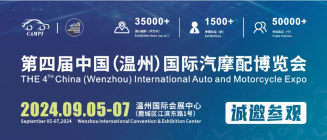Recently, foreign-funded companies such as Mercedes-Benz, BMW, and Volkswagen have made efforts to electrify. The strategic layout of new energy mainly presents three directions: First, speed up strategic planning and propose clear new energy target plans; second, the trend of platformization is obvious, and the layout of electrified platforms Accelerate; The third is to focus on research and development, and investment in research and development continues to increase.
1. Mercedes-Benz released the GLE plug-in hybrid model, and the company’s electrification strategy continued to advance
On November 20th, the 2020 Guangzhou Auto Show is on schedule. Mercedes-Benz will bring 1 world premiere and 10 models on the market in China. At the auto show, Mercedes-Benz’s new GLE 350 e 4MATIC plug-in hybrid model was officially launched. Only one configuration model was launched, priced at RMB 818,800. The car is based on GLE and uses Mercedes-Benz's third-generation plug-in hybrid technology. It is the only model that provides two charging modes: DC and AC in the same segment of the market. The pure electric cruising range reaches 103 kilometers (NEDC comprehensive working conditions), and under the condition of 60kW DC charging, the power from 10% to 100% only takes 30 minutes.
At the same time, Mercedes-Benz announced its future electrification strategy and stated that pure electric AMG models will soon be released to accelerate the electrification of all brands and achieve a small goal in 2030-electric vehicles account for more than half of new car sales. Mercedes-Benz officially stated that it is actively deploying a diversified new energy strategy in China. While bringing EQ pure electric models, it is also exploring solutions for plug-in hybrid vehicles.
Mercedes-Benz continues to promote the process of electrification, moving closer to the "vision 2039". On October 6, 2020, Mercedes-Benz has released a new brand strategy: with the "vision 2039" as the goal, it will be committed to a clear plan for the electrification of the entire product lineup, and its determination to fully achieve business carbon neutrality. To this end, Mercedes-AMG, Mercedes-Maybach, Mercedes-Benz G-Class and other product series will successively launch pure electric models. At the same time, Mercedes-Benz will also develop two electric vehicle platforms EVA and MMA, and a set of independent automotive software system MB.OS.
In addition, BMW, Audi, etc. are also making continuous efforts. BMW has stepped up its electrification offensive and focused on the Chinese market. As early as January 2020, BMW revealed its model plan. BMW said that it will launch 17 new products in 2020 and will adopt BMW (China) registered in Beijing. Investment Co., Ltd. increased its investment in the Chinese market. In addition, BMW also defines 2020 as the "year of new energy vehicles" and will launch 6 new energy vehicles for Chinese consumers by the end of 2020.
Audi is accelerating the introduction of electric vehicles, and the electrification strategy will remain unchanged in the next five years. Prior to this, Audi announced its product plan: It plans to launch 30 electric models by 2025, including 20 new pure electric vehicles and 10 new plug-in hybrid vehicles .
2. BMW said it will develop a pure electric platform, the development trend of platform is obvious
In November, it was reported that the BMW Group will change its conservative electrification strategy and will develop a pure electric platform. The platform will come out in 2025 and will be officially put into use in a new plant in Hungary.
Currently, Mercedes-Benz EQS based on EVA pure electric platform will be launched in 2021. At the same time, Mercedes-Benz EQE, Mercedes-Benz EQS SUV and Mercedes-Benz EQE SUV are also under planning, and the second pure electric platform MMA module will be launched in 2025.化平台。 Audi will build the Audi Q4 e-tron series models based on the pure electric platform MEB and the Audi e-tron GT based on the pure electric platform J1. Both will be officially released in 2020. In addition, in terms of platformization of electric vehicles, many companies have made efforts.
Table Layout of Enterprise Electric Platform

3. Volkswagen continues to increase investment in new energy development, and many companies continue to increase R&D investment
Recently, Volkswagen has stated that it will continue to increase its investment in the development and research of related technologies such as electric vehicles and autonomous driving, up to 73 billion euros. By 2030, the Volkswagen Group will produce about 26 million pure electric vehicles in Europe, China and the United States, of which about 19 million will be based on the MEB modular electric drive platform, and most of the other 7 million will use high-performance PPE platforms .
General Motors also issued a statement on November 20, stating that it will accelerate its electrification strategy. By 2023, GM plans to increase its spending on electric vehicles and autonomous vehicles by 35% to US$27 billion. At the same time, GM said it will speed up the launch of new electric vehicles, and will launch 30 electric vehicles globally by 2025 (previously GM's goal was to launch 20 electric vehicles by 2023), among which new models launched in China Energy vehicles account for more than 40%. GM hopes to surpass its previously set goal of selling 1 million electric vehicles a year in the United States and China by 2025.
In addition, BMW has continuously increased its R&D investment in recent years. In 2019, the BMW Group’s profit before interest and taxes in the automotive business segment plummeted 27.2% to 4.499 billion yuan. One of the reasons was the increase in R&D costs, but it said that the future Will continue to increase capital and invest in research and development. In 2019, BMW's annual R&D expenses reached 5.952 billion euros, and R&D investment exceeded 5 billion euros for five consecutive years. In the first half of 2020, the BMW Group’s R&D expenses totaled 2.734 billion euros, compared with 2.796 billion in the same period last year. R&D investment in the first half of 2020 accounted for 6.3% of revenue, which was 0.5% higher than the 5.8% in the same period last year. The proportion of R&D investment is at a relatively high level.
On September 5th, we invite you to join us at the Wenzhou Auto Parts Exhibition on a journey to trace the origin of the Auto Parts City, as per the invitation from the purchaser!
Hot Booking | AAPEX 2024- Professional Exhibition Channel for Entering the North American Auto Parts Market
The wind is just right, Qianchuan Hui! Looking forward to working with you at the 2024 Wenzhou Auto Parts Exhibition and composing a new chapter!
Live up to Shaohua | Wenzhou Auto Parts Exhibition, these wonderful moments are worth remembering!
Bridgestone exits Russia and sells assets to S8 Capital
Live Up to Expectations and Honor to End | 2023 Wenzhou International Auto Parts Exhibition Successfully Ends! Looking forward to meeting you in 2024!
Free support line!
Email Support!
Working Days/Hours!





